Neji Mensi
Gradient Ascent Algorithm for Enhancing Secrecy Rate in Wireless Communications for Smart Grid
Aug 11, 2021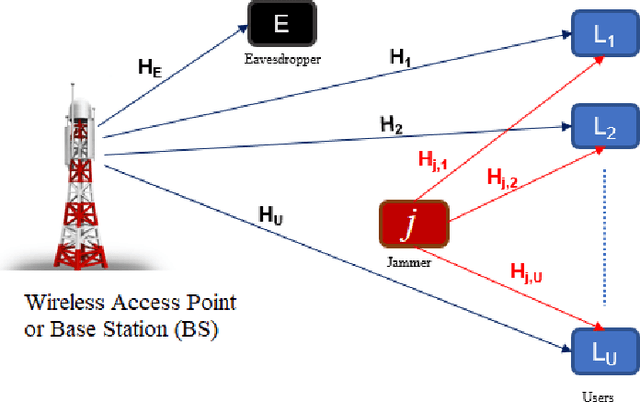
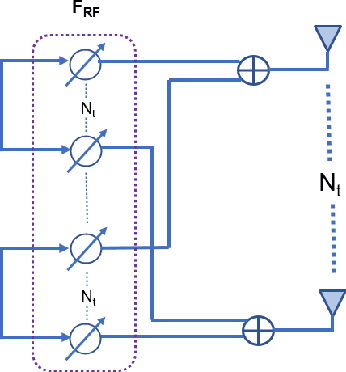
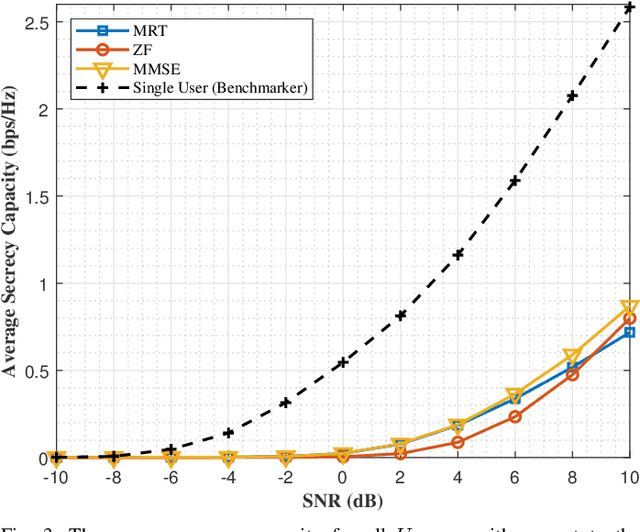
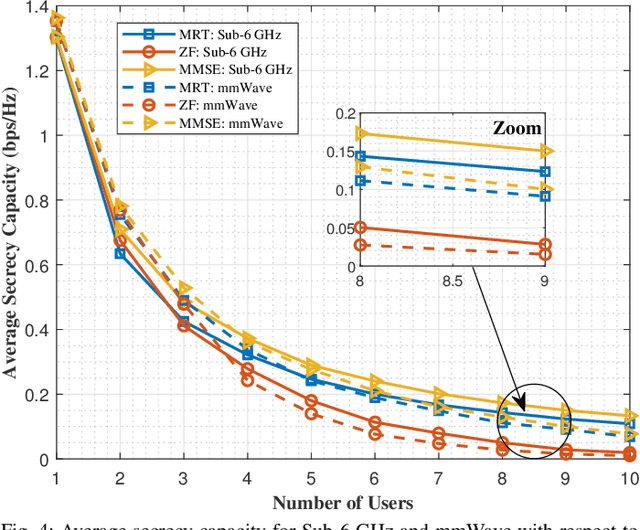
Abstract:The emerging Internet of Things (IoT) and bidirectional communications in smart grid are expected to improve smart grid capabilities and electricity management. Because of massive number of IoT devices in smart grid, size of the data to be transmitted increases, that demands a high data rate to meet the real-time smart grid communications requirements. Sub-6 GHz, millimeter-wave (mmWave) technologies, and massive multiple-input multiple-output (MIMO) technologies can meet high data rate demands. However, IoT enabled smart grid is still subject to various security challenges such as eavesdropping, where attackers attempt to overhear the transmitted signals and the jamming attack, where the attacker perturbs the received signals at the receiver. In this paper, our goal is to investigate jamming and eavesdropping attacks while improving secrecy capacity for smart grid communications. Specifically, we propose to employ a hybrid beamforming design for wireless communications in smart energy grid. In previous works, the secrecy capacity is increased by randomly augmenting the source power or setting the system combiners. Unlike state-of-the-art, we design and evaluate the Gradient Ascent algorithm to search for the best combiners/waveform that maximizes the secrecy capacity in smart grid communications. We also study two different optimization scenarios by considering both fixed and variable transmit power. Numerical results are used for performance evaluation and supporting our formal analysis.
Securing V2I Communications in 5G and Beyond Wireless System Using Gradient Ascent Approach
Feb 05, 2021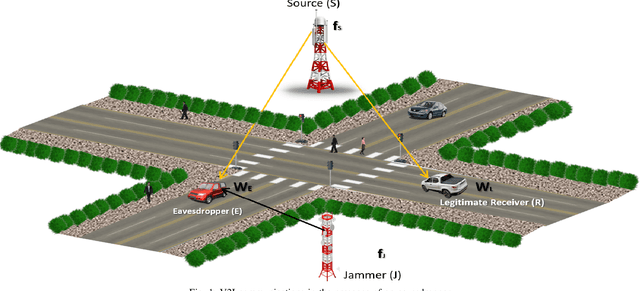
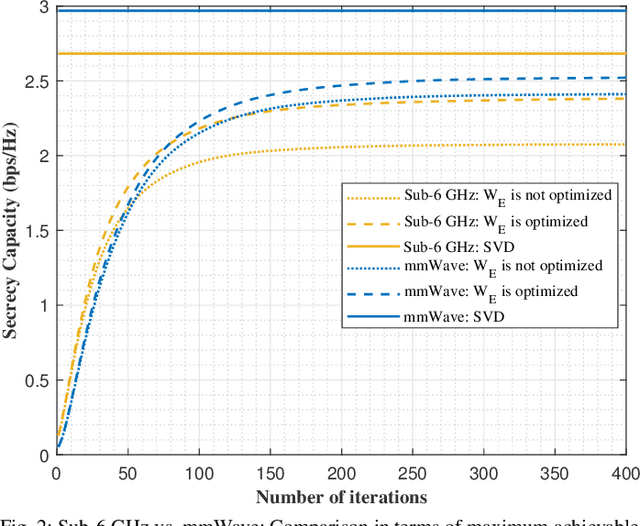
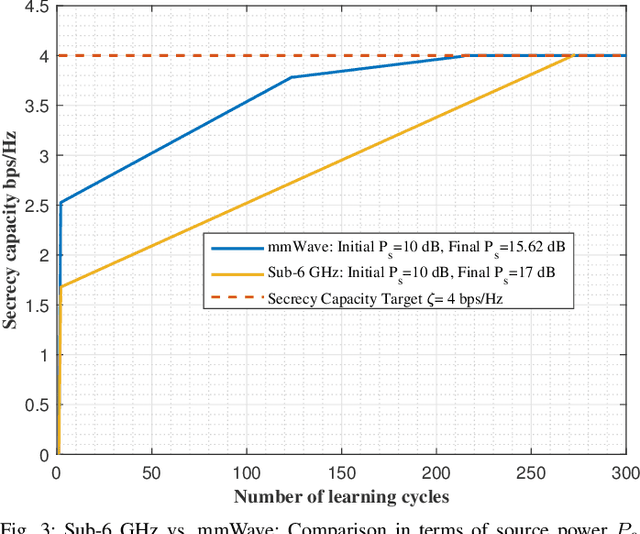
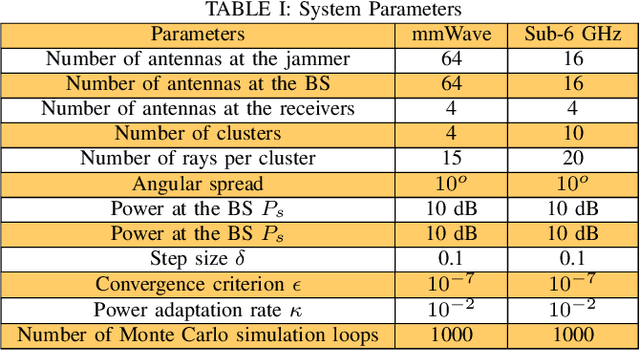
Abstract:The 5G and beyond wireless systems, instead of being just an extension of 4G, are regarded as `network of networks' which is expected to integrate heterogeneous wireless networks including wireless vehicular networks (WVN). The WVN promises to solve many issues such as reducing road accidents, traffic jams, fuel consumption and commute time, which is subject to various security issues such as eavesdropping, where attackers attempt to overhear the secret transmitted signal passively (which makes the detection/defense very difficult). In this work, our objective is to implement a security scheme by improving the secrecy capacity in Sub-6 GHz and millimeter-wave (mmWave) bands. Vehicle-to-Infrastructure (V2I) for 5G and beyond wireless network. Unlike previous works where the secrecy capacity is increased by randomly augmenting the source power or setting the system combiners/precoders, in this work we employ the Gradient Ascent algorithm to search for the best combiners/precoders that maximize the secrecy rate performance. We further present two different optimization scenarios: fixed and variable transmission power.
Temporal CSI Correlation in Mixed RF/FSO Cooperative Relaying Systems Under Joint Effects of HPA Nonlinearities and IQ Imbalance
Feb 03, 2021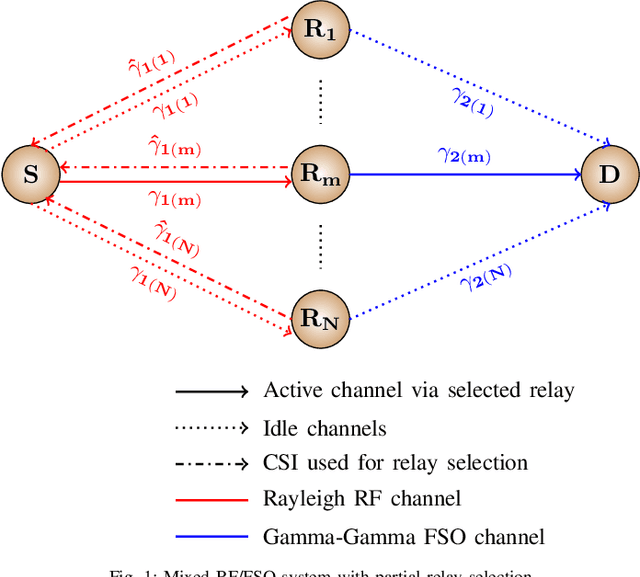
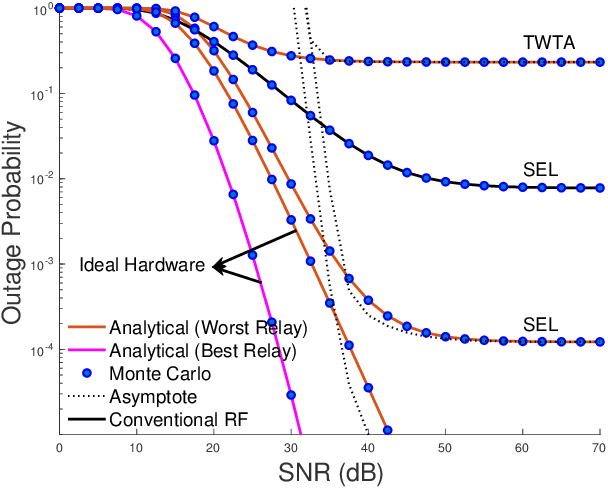
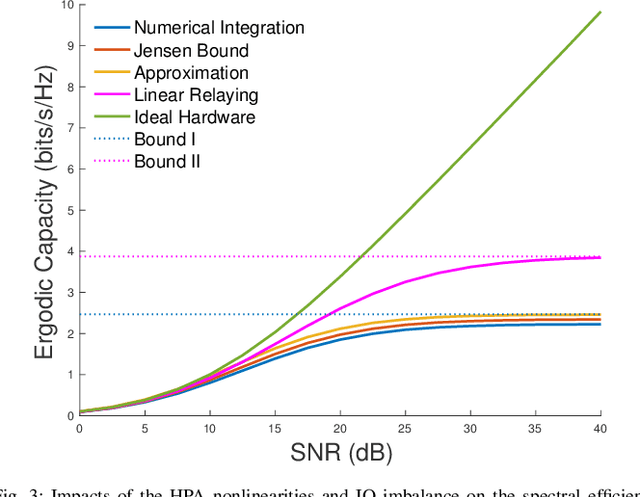
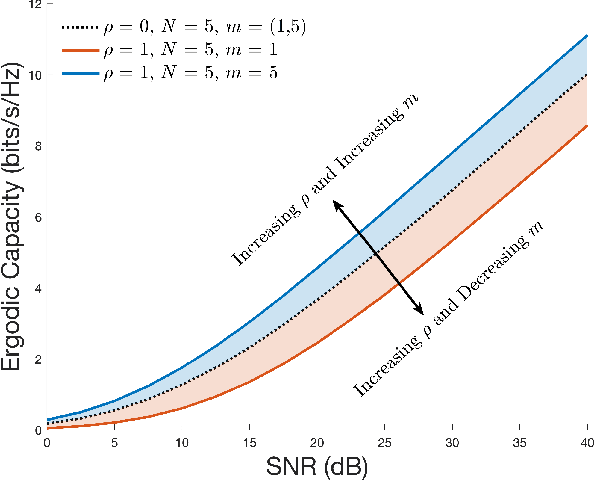
Abstract:In this paper, we present the performance analysis of mixed RF/FSO system with multiple relays. To select the best relay, we adopt partial relay selection with outdated CSI wherein we investigate the effect of the temporal correlation of the channels. Unlike the vast majority of work, we introduce the impairments to the relays and the destination and we compare the performance against conventional RF relaying systems. We further derive the expressions of the outage probability and the ergodic capacity as well as the bounds to unpack engineering insights into the system robustness.
 Add to Chrome
Add to Chrome Add to Firefox
Add to Firefox Add to Edge
Add to Edge